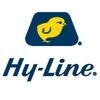Explore all the information on
Feed mills
Welcome to the page about Feed mills of Engormix; a source of knowledge on Feed mills.
Dear colleagues and professionals in the feed manufacturing industry, The image below shows a broken pellet die. I already know the root cause, but I’m sharing this to spark a technical discussion and learn from your insights. - What do you think could lead to such damage? - Have you faced similar issues? What solutions worked for you? I’d love to hear your thoughts and experiences. Let’s turn this into a learning opportunity for...
Comments : 1
Recommendations: 0
A comparison between Chain Conveyors and rotary distributors to show which is better to use in feedmills Power Consumption: - Chain conveyors generally consume more power due to the mechanical components involved in moving the chains and the weight of the materials being transported. The power requirement can vary based on the length of the conveyor and the load it carries. Advantages: 1. Durability: . Chain conveyors are robust and can handle heavy loads...
Comments : 0
Recommendations: 0
Recommended events
January 26, 2026
United States - Georgia - Atlanta
In the world of animal feed manufacturing, some parameters shout: protein levels, energy values, additive profiles. Others whisper, quietly shaping performance from behind the scenes. Particle size is one of those silent drivers. And yet, for monogastric species like pigs and poultry, it can be the difference between optimal feed conversion and costly inefficiencies. I’ve spent over three decades in feed process technology, and if there’s one...
Comments : 0
Recommendations: 3
1. Introduction Influenza A virus (IAV) is an enveloped RNA virus, a member of the Orthomyxoviri dae family, and is known to infect humans, mammals, and birds [1]. The virus is subtyped based on the antigenic cross-reactivity and sequence identity of two surface glycoproteins, namely, hemagglutinin (HA) and neuraminidase (NA) [2]. Excluding the recently identified H17N10 and H18N11 in bats, 16 HA and 9NAIAV subtypes have been identified in mammals and birds to date...
Comments : 1
Recommendations: 1
Among the many quality criteria in animal feed production, pellet durability is often cited as one of the most critical. And rightly so: fragile pellets tend to generate too much dust and fines, which can impact feed intake, zootechnical performance, and even trigger complaints from farmers. It’s no surprise, then, to see a growing number of posts, articles, and expert opinions stressing the importance of durability and how to improve it. But behind this apparent consensus...
Comments : 0
Recommendations: 1
INTRODUCTION Feed particle size is an often-overlooked aspect of poultry production. Producers should not assume that feed is of a uniform size and homogeneously mixed, or that the feed mill is providing the ideal mix of particles in a ration. Feed particles range in size from very fine to coarse, and different grinding methods will result in different particle size distributions. Differences in particle size within a ration can affect both the digestive system and the...
Comments : 0
Recommendations: 1
An interview with Pablo A. Fernández Moriana, Director of Sales and Management at CPM Pacific, discussing the key challenges faced by feed manufacturers in Southeast Asia, the impact of sustainability trends on feed production, and the technological innovations CPM offers to enhance product efficiency and quality....
Comments : 0
Recommendations: 0
Join Matt Boland (CPM) as he explores how AI can drive real-time production adjustments to boost feed mill efficiency. Discover the importance of robust OT networks and advanced sensors in optimizing systems, and dive into the evolution toward fully autonomous “lights-out” facilities, shaping the future of production....
Comments : 0
Recommendations: 0
Matt Boland (CPM) shares practical steps to get your feed mill ready for the future of self-optimizing systems. Position your operation for increased production, reduced waste, and consistent quality by implementing smart, forward-thinking strategies for long-term success....
Comments : 0
Recommendations: 0
Phil Wellhausen (Applications Manager, CPM) explains the reasons for good conditioning and how to check and maximize retention time, during FIGAP 2024 in Mexico....
Comments : 2
Recommendations: 2
Phil Wellhausen (Applications Manager, CPM) discusses steam, and dry and wet choke points, during FIGAP 2024 in Mexico....
Comments : 1
Recommendations: 0
Phil Wellhausen (Applications Manager, CPM) discusses conditioning dynamics and how pellets improve feed conversion, during FIGAP 2024 in Mexico....
Comments : 1
Recommendations: 0
Phil Wellhausen (Applications Manager, CPM) explains picks replacement and temperature probe cleaning, during FIGAP 2024 in Mexico....
Comments : 0
Recommendations: 1
Phil Wellhausen (Applications Manager, CPM) discusses steam headers and pressure-reducing valves, during FIGAP 2024 in Mexico....
Comments : 0
Recommendations: 0
Greetings All, I’m new to the forum and appreciate the wealth of knowledge here. I’m looking into single-cell protein (SCP) produced from methanotrophs or microalgae for animal feed applications and am curious about any practical considerations from the feed mill side. Beyond nutritional or toxicity questions, I’m wondering if anyone has encountered operational challenges with these ingredients—such as issues with machinery handling, potential...
Comments : 0
Recommendations: 0
Poultry industry experts at the 2025 Latin American Poultry Summit will present information on factors that affect the efficient marketing of poultry farming. The program is organized into five sessions – grain management, food safety, genetics, breeding and health – and will take place on Monday,...
Comments : 0
Recommendations: 0
John Boney (Penn State University) comments on nutrient segregation, feed quality, pellet degradation, and on-farm feed sampling methods, in this Engormix interview....
Comments : 7
Recommendations: 3
Dejan Miladinovic (Head of Centre for Feed Technology, Norwegian University of Life Sciences) offers his vision for the future of feed mills. He comments on automation, data optimization, real-time monitoring, smart sensors, and sustainability, in this Engormix interview....
Comments : 2
Recommendations: 2
Victoria Wilson (Seaboard Foods) comments on her experience when testing for mycotoxins, during this Swine It interview with host Laura Greiner....
Comments : 1
Recommendations: 0
1. Introduction The health of the gastrointestinal tract is one of the important indicators of the overall health of an organism. The health of the intestine is given considerable attention in human nutrition due to the existence of various autoimmune and other diseases. Intestinal epithelial barrier dysfunction and increased permeability result in a “leaky gut”, which is associated with intestinal disorders in humans, such as inflammatory bowel disease (IBD), bowel...
Comments : 0
Recommendations: 0













.jpg&w=3840&q=75)









